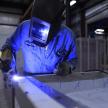
31st
Lead in Paint: Updates to the Australian Standard
By Elise Chiappalone
In December 2017, a new Australian Standard was published for management of lead paint in buildings which saw a major change in the safe concentration standard, which was reduced from 1.0% lead down to 0.1%.
The Standard now reflects the paint manufacturing definition of lead-free which has been 0.1% concentration since 1997.
What impact will this have on existing buildings?
This reduction in the percentage of lead in paint that is considered safe as per the Australian Standard means that painted surfaces older than about 20 years may now be defined as lead containing. As a result, structures built prior to 1997 will require an update to their hazardous materials register.
Undisturbed paint in good condition is typically low risk, however, if there is paint in poor quality, or if there are refurbishment or demolition works planned that may disturb the paint, testing is recommended to determine the concentration of lead so that management or remediation may be undertaken.
If you would like more information about how this may impact you please contact us. You can also learn more about hazardous materials here.
Reference: AS/NZS 4361.2:2017 Guide to hazardous paint management Lead paint in residential, public and commercial buildings (purchase from SAI Global)
Categories
Recent Posts
Trichloramine and Indoor Air Quality in Swimming Pools
05th Nov
For swimmers and pool workers alike, the characteristic "chlorine smell" at indoor swimming pools is part of the experience. Howev...
Indoor Air Quality Takes Centre Stage: A New Government Report on Airborne Virus Transmission
30th Sep
The importance of Indoor Air Quality (IAQ) has gained significant attention following the release of a groundbreaking report from Australia‚...
Changes to the workplace exposure standard for welding fumes
15th Mar
On January 18, 2024, SafeWork Australia made a significant adjustment to the Workplace Exposure Standard (WES) for Welding Fume (not otherwi...

















